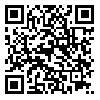Volume 16, Issue 2 (1-2017)
ijdld 2017, 16(2): 95-102 |
Back to browse issues page
Download citation:
BibTeX | RIS | EndNote | Medlars | ProCite | Reference Manager | RefWorks
Send citation to:



BibTeX | RIS | EndNote | Medlars | ProCite | Reference Manager | RefWorks
Send citation to:
Aryandoost S, Nazarali P, Fathi R, Sohbatzadeh F. THE EFFECT OF ENDURANCE EXERCISE ON WOUND HEALING OF DIABETIC RATS BY COLD PLASMA. ijdld 2017; 16 (2) :95-102
URL: http://ijdld.tums.ac.ir/article-1-5495-en.html
URL: http://ijdld.tums.ac.ir/article-1-5495-en.html
1- 1. Department of Exercise Physiology, faculty of Physical Education and Sport Sciences, Alzahra University, Tehran, Iran , sahbaemailbox@yahoo.com
2- Department of Exercise Physiology, faculty of Physical Education and Sport Sciences, Alzahra University, Tehran, Iran
3- Department of Exercise Physiology, faculty of Physical Education and Sport Sciences, Mazandaran University, Mazandaran, Iran
4- Department of Nuclear and Molecular Physics, faculty of Basic Sciences, Mazandaran University, Mazandaran, Iran
2- Department of Exercise Physiology, faculty of Physical Education and Sport Sciences, Alzahra University, Tehran, Iran
3- Department of Exercise Physiology, faculty of Physical Education and Sport Sciences, Mazandaran University, Mazandaran, Iran
4- Department of Nuclear and Molecular Physics, faculty of Basic Sciences, Mazandaran University, Mazandaran, Iran
Abstract: (5682 Views)
Background: Diabetic foot wound considered as cause of disability in diabetic's patients. And despite the progress made in the diagnosis and treatment of diabetes, since diabetic foot problem has not been resolved. The aim of this study was to investigate the effect of endurance training and cold plasma on wound healing in diabetic rats.
Methods: 25 male Wistar rats were divided randomly into 5 groups (n=5). The once injected intraperitoneally with a concentration of 40mg/kg of body weight was taken. 4mm punch biopsy wounds were used to create skin wound. The exercise protocol, consists of 60minutes of running on a treadmill at a speed of 25m/min, 5days a week for 4times in a week. The whole process of plasma irradiation on wound took over 8times at each of the plasma samples for 10 minutes under direct radiation at a distance of 20 mm from the tip, respectively. The wound picture was taken with the camera Dino-Lite. Given the normal distribution of data to test hypotheses of parametric tests one-way ANOVA and repeated measure ANOVA were used to determine differences (P≤ 0.05).
Results: The findings showed that the difference between exercise+diabetes group and Ctrl+diabetes group wasn’t significant. In addition, the difference between plasma+diabetes group and Ctrl+diabetes group wasn’t significant. However, the significant difference was between plasma+training+diabetes group and Ctrl+diabetes group.
Conclusion: This is the first time that the combination of exercise and cold plasma used for wound healing in diabetes and have significantly accelerated wound healing in diabetic mice.
Methods: 25 male Wistar rats were divided randomly into 5 groups (n=5). The once injected intraperitoneally with a concentration of 40mg/kg of body weight was taken. 4mm punch biopsy wounds were used to create skin wound. The exercise protocol, consists of 60minutes of running on a treadmill at a speed of 25m/min, 5days a week for 4times in a week. The whole process of plasma irradiation on wound took over 8times at each of the plasma samples for 10 minutes under direct radiation at a distance of 20 mm from the tip, respectively. The wound picture was taken with the camera Dino-Lite. Given the normal distribution of data to test hypotheses of parametric tests one-way ANOVA and repeated measure ANOVA were used to determine differences (P≤ 0.05).
Results: The findings showed that the difference between exercise+diabetes group and Ctrl+diabetes group wasn’t significant. In addition, the difference between plasma+diabetes group and Ctrl+diabetes group wasn’t significant. However, the significant difference was between plasma+training+diabetes group and Ctrl+diabetes group.
Conclusion: This is the first time that the combination of exercise and cold plasma used for wound healing in diabetes and have significantly accelerated wound healing in diabetic mice.
Type of Study: Research |
Subject:
Special
Received: 2016/04/3 | Accepted: 2017/05/2 | Published: 2017/09/26
Received: 2016/04/3 | Accepted: 2017/05/2 | Published: 2017/09/26
Send email to the article author
| Rights and permissions | |
 |
This work is licensed under a Creative Commons Attribution-NonCommercial 4.0 International License. |





